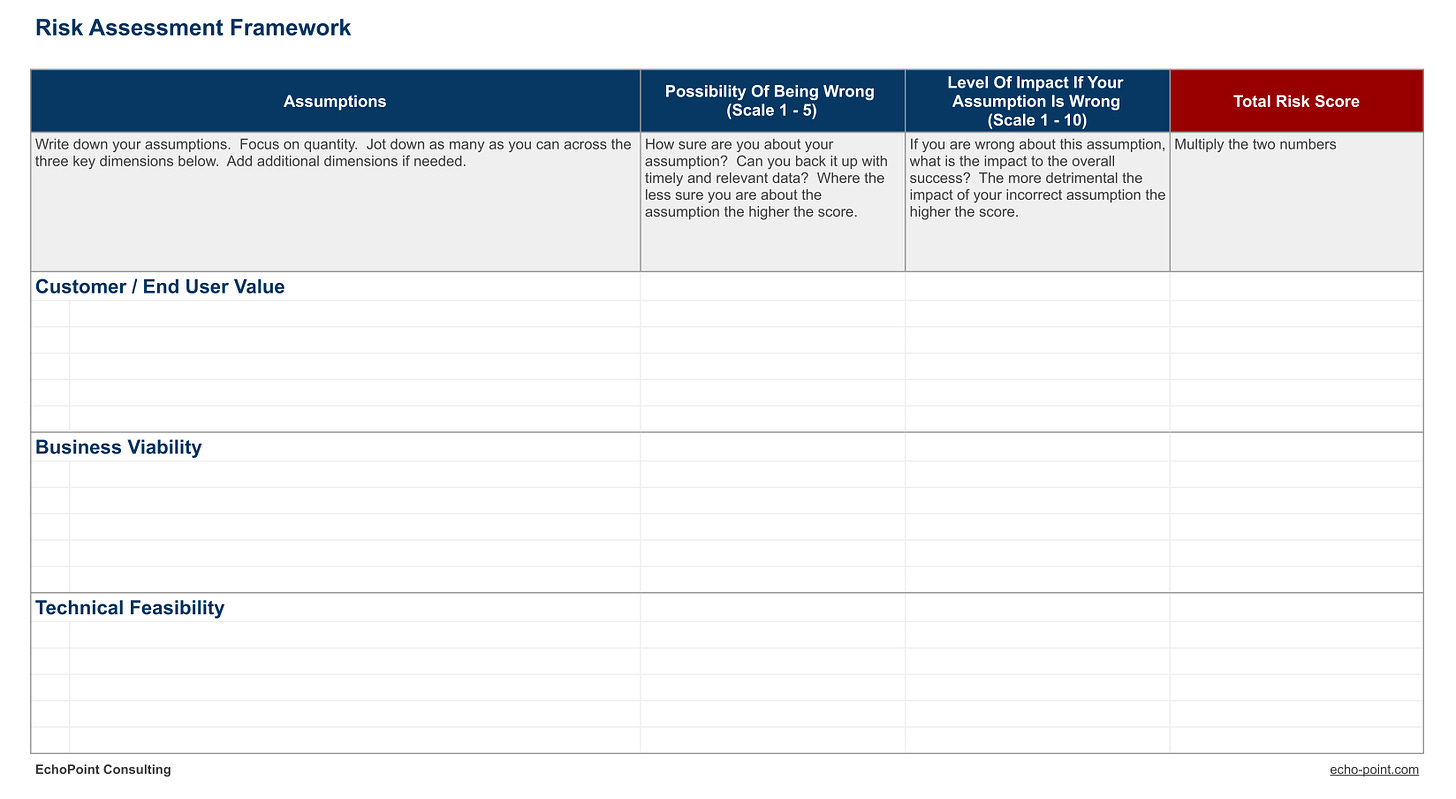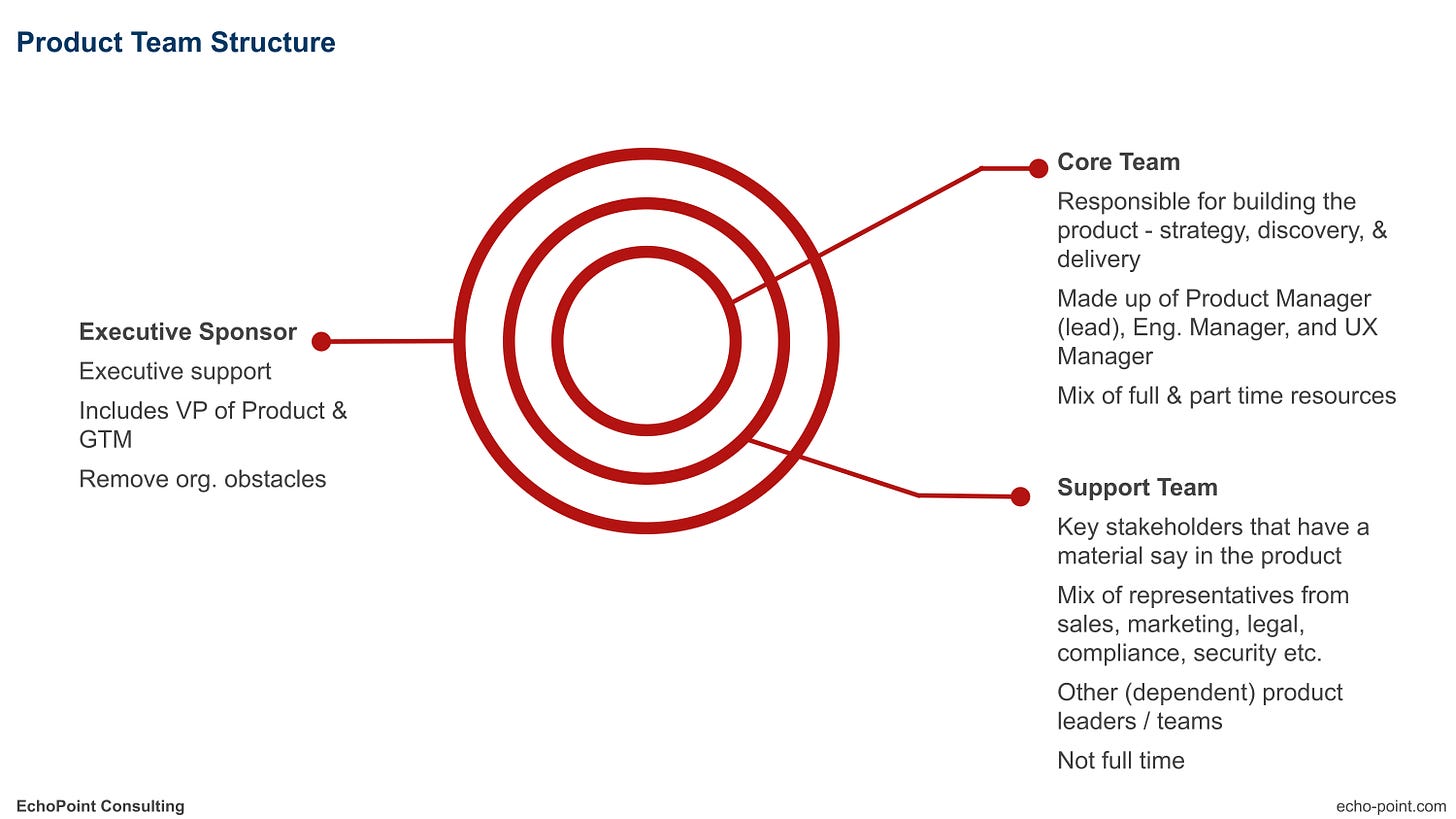Great Products Start With A Good Strategy
All products solve a customer problem (or attempt to at the very least).
What sets products apart, is that great products pick the right problem and solve it really well.
But how do you pick the right problem to solve?
After all, customers have too many problems. How do you know which problem is worth solving.
This is where a good product strategy comes into play.
It is amazing how many product teams I meet are building a product without a good strategy. They are slaving away, building features after features. But rarely getting close to their desired outcome.
It reminds me of this South Park clip (hint: lower the volume).
The Problem With Not Having A Good Product Strategy Is Three Fold
First, without strategy, all problems are equal. There is no way to tell if the team is working on solving the customer’s most important problem.
Second, it is demoralizing. The teams are simply building features for the sake of building. There is no direction, a larger purpose or mission. They are cogs in a big corporate wheel.
Third, lack of impact. If you don’t know why you are building something or if it even matters. Then the only success metric is output (i.e launch a feature). And we know from experience that output is not the same as outcome.
So What Does Good Strategy Look Like
A good product strategy consists of the following four elements,
- Vision: A holistic view on the product’s user, problems, value, and desired outcome
- Risk Assessment: Identify key and material risks to the products success
- Product Roadmap: Plan to deliver the product and mitigate the risk
- Team Structure: Team makeup that will deliver the vision quickly and efficiently.
Let’s deep dive into each one of them.
1. Building The Product Vision
Definition:
A holistic view of what you are trying to build. It includes – the customer, the problem, the value, and the desired outcome.
Why Do You Need It:
The product vision is the single most important document that you will create as a product manager.
A good product vision can help with,
- Gaining alignment with executives
- Securing funding
- Mobilizing and motivating a team
- Providing focus, and
- Making key product decisions
No wonder, product managers at Amazon and Google take months perfecting their vision before they write a single line of code.
What Does It Look It:
There are a ton of vision templates available. Amazon has it’s famous 6 pager. Google has its Product Requirements Document (PRD).
My personal favorite is the business model canvas. Here is a modified version, we have used with several of our clients.

Three things to note.
First, you will notice that there is no mention of features in the above canvas. That is on purpose. The point of the vision is to paint a picture of what you want to solve / achieve. How we plan to do so, is included in the product roadmap.
Second, by keeping it all on 1 page. It makes it easy to create and consume. For more details, you can always pair it with support documents.
Third, this canvas is not locked in stone. Feel free to customize it as you see fit.
2. Risk Assessment Framework
Definition:
A framework to identify, score, and prioritize risk
Why Do You Need It:
Most products fail not because they did not build the “right killer” feature. They fail because the product team made an assumptions that ultimately did not turn out to be true.
For example, Quibi spent $1B+ building a new mobile streaming platform. Based on the assumption that users would be willing to pay for their unique service. Only to find out – post launch – that no one wanted it.
To avoid this type of fate, high performing product teams routinely identify their built in assumptions, prioritize, and work towards mitigating it.
What Does It Look Like:
Here is what a risk assessment template looks like.

The reason I like using this framework is because it helps you score and prioritize your the risks (column A & B).
Column A is on a scale of 1 – 5. Asking you to rate the possibility that your assumption might be wrong. This is like an inverse confidence rating. The less you are confident about the assumption, the higher the number.
Column B is on a scale from 1 – 10. Asking you to rate how detrimental an incorrect assumption would be to your product’s success.
Multiplying the two numbers helps you identify the highest risk.
I recommend, teams not only conduct a risk assessment as part of their product strategy. But also, do so on a routine basis so that they can continue to focus on what is important.
3. Product Roadmap
Definition:
A visual summary that maps out product direction and key deliverables
Why Do You Need It:
A product roadmap encapsulates how you plan to bring the vision into reality. It is one of the few product documents that almost everyone in the organization will see.
A roadmap is often used to
- Describe how you plan to execute the strategy (what your team is planning to do and when)
- Gain alignment with various internal and external stakeholders
- Discuss options and assist with making trade offs
- Help with scenario planning, and
- Provide status updates to management
What Does It Look Like:
Product roadmap, as you can imagine, come in all different shapes and sizes.
I prefer a simple format, like the one below. After all, the primary job of the document is to communicate your intent.

There are also a ton of software tools (Aha!, Wrike, and Airfocus) that can help you build your product roadmap.
4. Product Team
Definition:
Cross functional product team strcuture
Why Do You Need It:
Behind every great product is a high performing cross functional product team, made up of skilled individuals working towards a common goal.
Benefits of a cross functional team are,
- Focused on a common goal. Measured on the same outcome (regardless of where they sit in the organization chart)
- Agile, improved coordination, ability to make quick decisions
- Self sufficient, not dependent on other teams for core work
- Better team morale, diversity of thoughts, ideas, experiences, high trust and learning environment
- Better product outcomes
What Does It Look Like:
In my experience, high performing teams leverage the following three tier structure.

Core Team: The core team includes the product manager (lead), the engineering manager, and user experience manager.
They are responsible for,
- Building the product strategy
- Defining and validating the solution, leading product discovery
- Defining, building, and launching the MVP
In most cases this team is full time and dedicated to the product. And the entire team is accountable for delivering the outcome, not the output.
Support Team: The support team as an extension of the core team. It includes representatives from organizations that the product team is dependent upon. Example sales, marketing, legal, security, infrastructure etc.
They are responsible for,
- Assisting the core team through product development lifecycle – strategy, discovery and delivery
- Interfacing between their organization and the core team, managing key dependencies
- Determining technical feasibility, business viability, gaining approvals and internal alignment
Executive Team: The executive team is the main sponsor. It consists of executives from both the product team and internal stakeholders.
They are responsible for creating the team, securing funding, providing guidance, monitoring progress, and removing organization roadblocks.
A Good Product Strategy Should Not Take Too Long
Here is what we have seen work for many of our clients.

In my experience, setting up the product team takes the most amount of time.
Once that is done, developing the artifacts – using design thinking techniques – can be relatively quick. First draft can be completed in a week. Socialize, refine, and finalize in another 2 – 3 weeks. And a draft to take to your executives for funding, a week after that.
The key to a good product strategy is to,
- Keep it light. As long as it is directionally correct, you are good to go. It’s too early in the process for a fully vetted completely buttoned up document. Better to acknowledge the gaps / risk and make it part of your key activities in the roadmap.
- It’s Never Complete. A good strategy document is a living breathing document. As you discover and build the product, your understanding of the customer’s needs, problems, and preferences will grow. The strategy artifact is a good place to document these key revelations.
- Built Together. If you want buy in from the rest of the organization. Without wasting too much cycle time on gaining alignment. The best approach is to create the strategy with the support team.
If all this is new to your team. Don’t worry take it slowly and one step at a time. Alternatively, you can always get help (see below).
Once you build the strategy, the team can then start focusing on the product discovery phase. Where we start to test out the needs and the solution with the customer directly.

